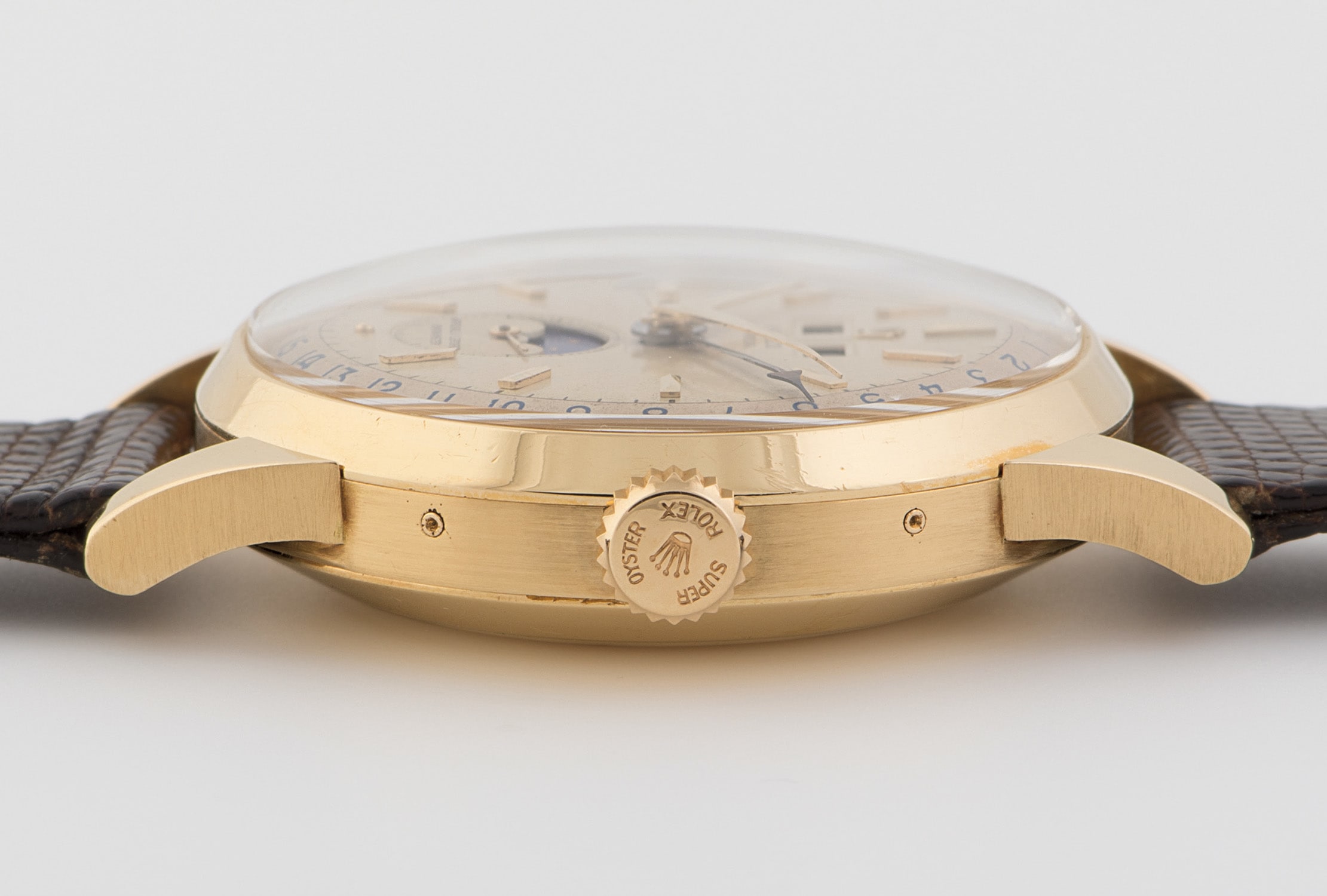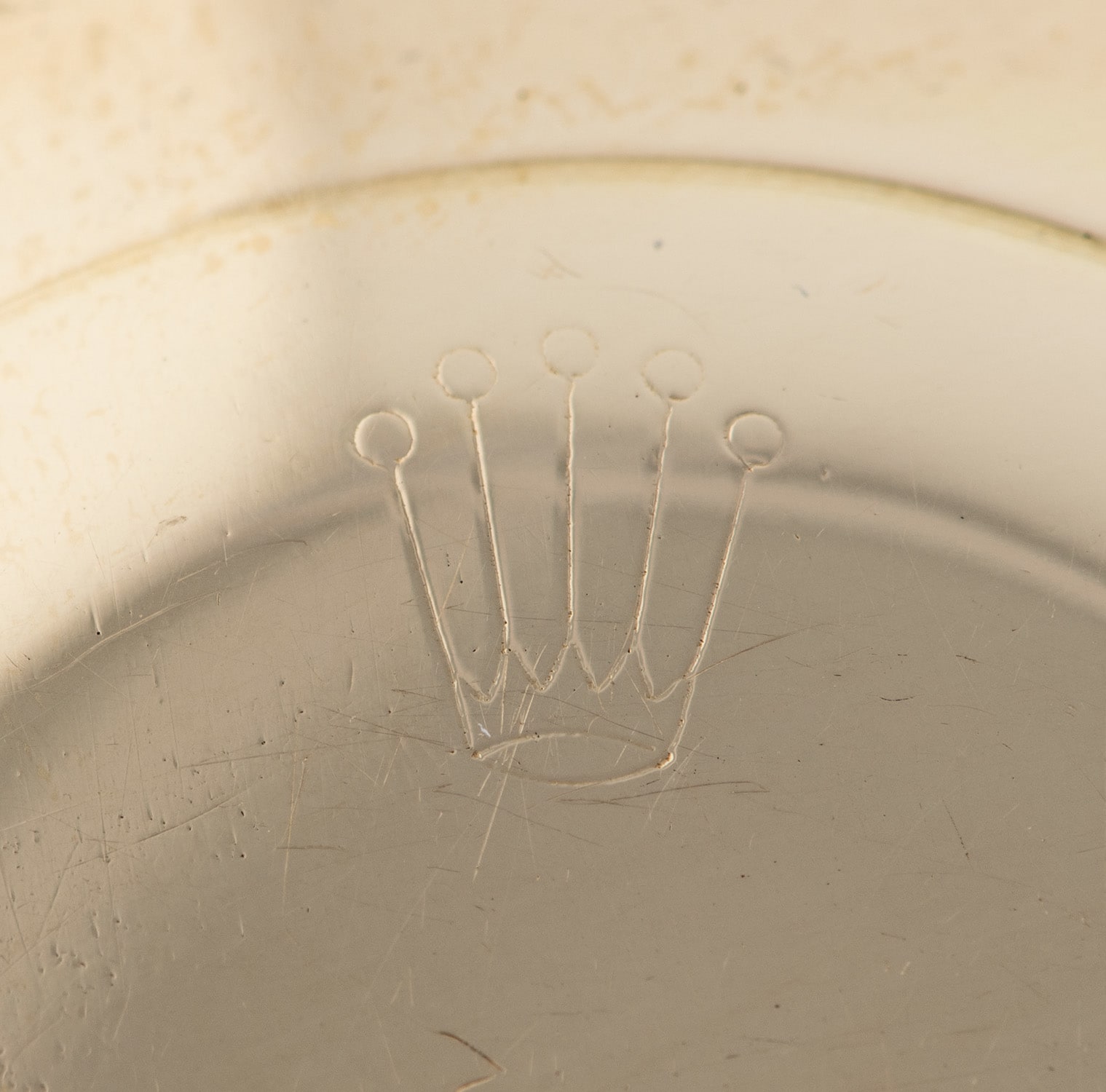











74ΔΣ
Rolex
Ref. 8171, inside case back stamped 8171
"Padellone"
An extremely rare, highly attractive, and well-preserved yellow gold triple calendar wristwatch with moon phases and two-tone dial
Full-Cataloguing
Reference 8171 impresses not only with its large 38mm diameter, especially when considering that a large gentleman’s watch in 1950 was around 35mm, but in particular with its harmonious case proportions and sharp edges, facets and angles. As a consequence, the 8171 case is breathtaking when preserved in close to mint condition, such as the current lot. On the opposite side of the scale, when subjected to repeated and unprofessional polishing, most of its charm and beauty is lost. This particular reference 8171 has happily not suffered such a fate. The Rolex crown and case number on the back, notoriously susceptible to rubbing off or disappearing entirely with any unskilled polish, is still quite visible with sharp definition. The brushed finishing to the sides of the case and underside of the lugs is still beautifully present, as is the Helvetia hallmark with the ‘G’ for the Geneva bureau de contrôle below. The lugs are thick and full, and there is a definitive step between the lugs and the case, which is only seen on the best preserved models.
Due to the sheer expanse of the dial, it is what draws the eye first when being evaluated by collectors and aficionados. The current lot has a beautiful and desirable two-tone dial, with the inner dial having aged to an even lemon crème color that harmonizes well with the lustre of the case. The blue numerals on the outer day track are well preserved with no signs of fading or loss. The overall effect is quite sublime.
Fresh-to-the-market, it is even fitted with its original Rolex strap and buckle – both as well-preserved as the case, indicating the watch was hardly ever worn. This timepiece offers collectors the opportunity to own one of the most beautiful and charismatic examples of the reference 8171 in yellow gold to surface in recent memory.
Rolex
Swiss | 1905Founded in 1905 England by Hans Wilsdorf and Alfred Davis as Wilsdorf & Davis, it soon became known as the Rolex Watch Company in 1915, moving its headquarters to Geneva in 1919. Like no other company, the success of the wristwatch can be attributed to many of Rolex's innovations that made them one of the most respected and well-known of all luxury brands. These innovations include their famous "Oyster" case — the world's first water resistant and dustproof watch case, invented in 1926 — and their "Perpetual" — the first reliable self-winding movement for wristwatches launched in 1933. They would form the foundation for Rolex's Datejust and Day-Date, respectively introduced in 1945 and 1956, but also importantly for their sports watches, such as the Explorer, Submariner and GMT-Master launched in the mid-1950s.
One of its most famous models is the Cosmograph Daytona. Launched in 1963, these chronographs are without any doubt amongst the most iconic and coveted of all collectible wristwatches. Other key collectible models include their most complicated vintage watches, including references 8171 and 6062 with triple calendar and moon phase, "Jean Claude Killy" triple date chronograph models and the Submariner, including early "big-crown" models and military-issued variants.